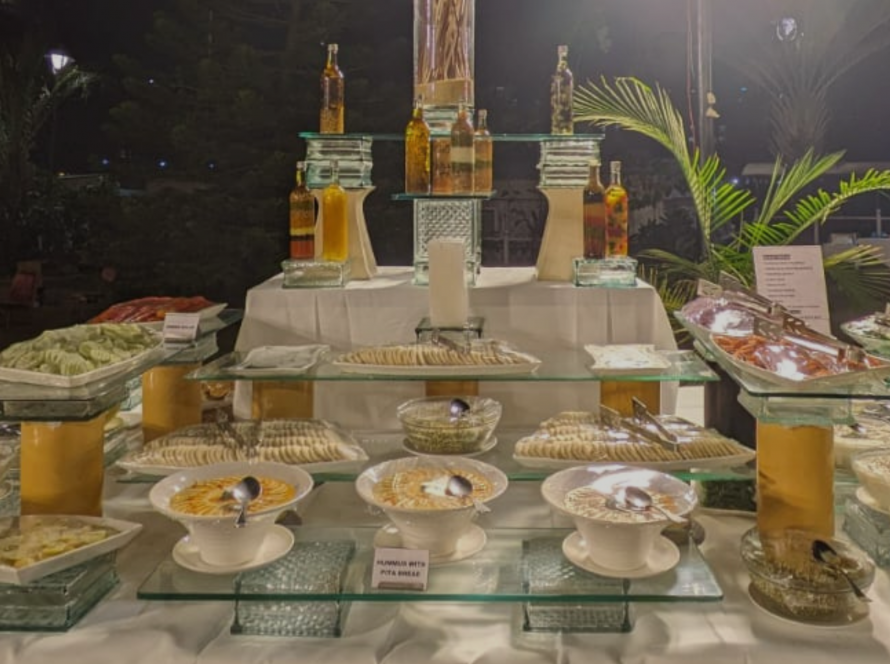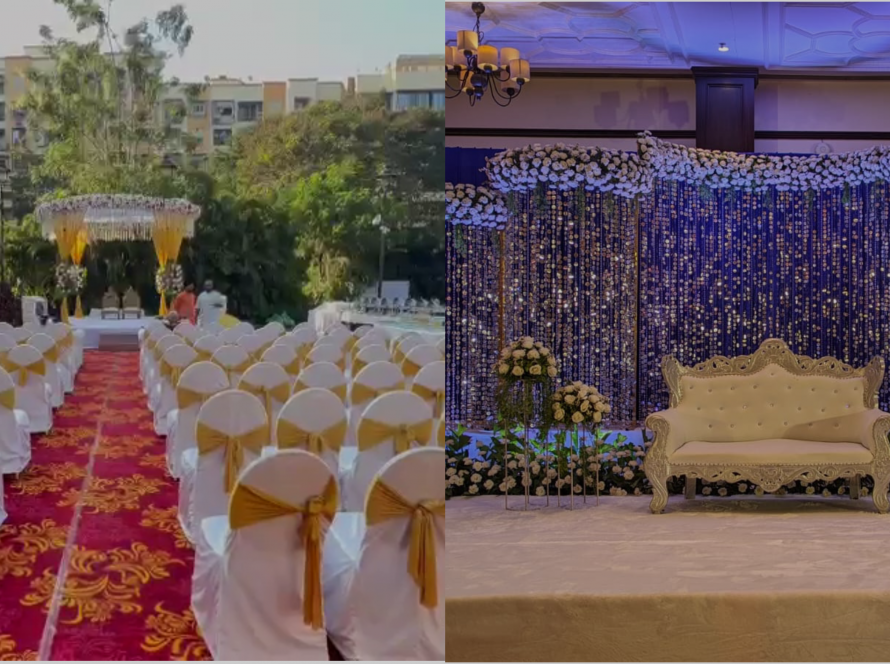One might think that simply placing a platform in the center of a banquet hall and decorating it is sufficient for any event. However, it’s essential to understand that each event requires its own stage placement, setup, and decoration. For example, a central stage might be perfect for a wedding, offering a 360° view, but it may not suit a sangeet ceremony or a reception. Each type of event has unique needs and ambiance that must be considered in the stage design.
1. Wedding:
If your banquet hall features a central chandelier, consider placing a beautiful mandap beneath it for a 360° view. Alternatively, set up a stage at one end of the hall, allowing guests to appreciate the lit and decorated space upon entering. Choose an elegant stage design with floral arrangements, draped fabrics, and soft lighting. Personal touches like a backdrop with the couple’s initials or a floral arch can enhance the ambiance.
2. Haldi Ceremony, Sangeet and Reception:
All three events require the bride and the groom to face the guests. For this, a royal stage can be set up on one side of the hall, ensuring accessibility for all guests. Ensure the stage is accessible for guests.
- Haldi Ceremony: For Haldi, A vibrant, colorful stage with plenty of space for dancing is essential.
- Sangeet: A vibrant, colorful stage with plenty of space for dancing is essential. Use bright drapes, fairy lights, and a DJ setup to create a lively atmosphere.
- Reception: Create a sophisticated look with chandeliers, a grand backdrop, and ambient lighting. Incorporate elements like a plush seating area for the couple and space for performances or speeches.
3. English Reception:
An English reception is one where all the guests have a dedicated seating and the newlywed couple walks towards each of the tables to meet all the guests. This kind of reception requires no stage set-up.




